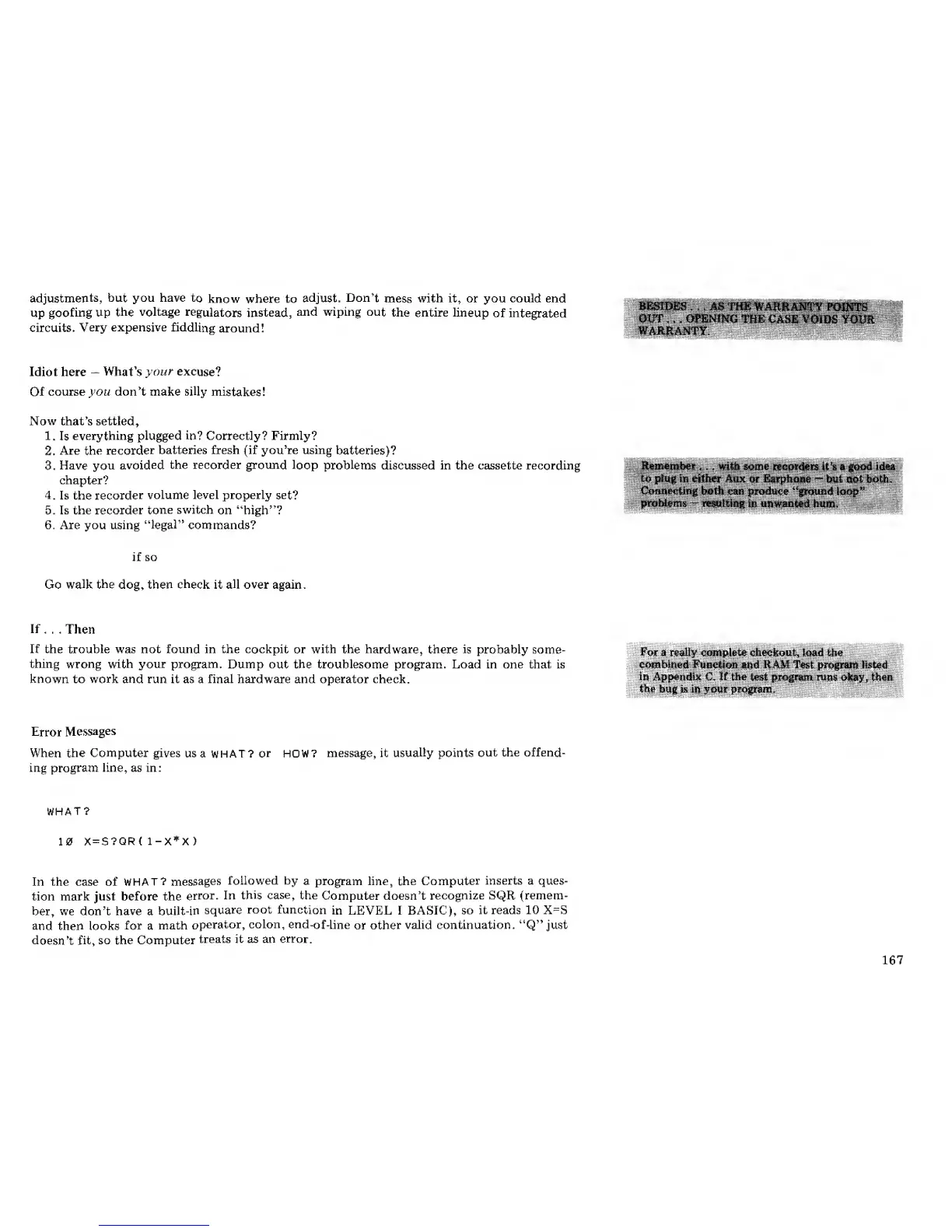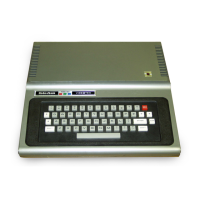adjustments,
but you have
to
know where to
adjust. Don't
mess
with it, or you could end
up
goofing up
the
voltage
regulators
instead,
and wiping out
the entire lineup
of
integrated
circuits.
Very expensive
fiddling
around!
,AS
THE
WARRANT
POllTTS
OUT
,:'.
.
OPENING
THE CASE:
VOIDS
YOUR
WARRANTY.
Idiot here
-
What's
your
excuse?
Of
course you don't make
silly
mistakes!
Now that's settled,
1. Is
everything plugged
in?
Correctly? Firmly?
2.
Are the
recorder
batteries fresh (if you're using
batteries)?
3.
Have
you
avoided
the recorder ground
loop problems
discussed in the cassette recording
chapter?
4.
Is the
recorder
volume level properly
set?
5. Is the recorder
tone
switch
on "high"?
6. Are you using
"legal"
commands?
leffi6t»t>^;
i
';-;
i
^i^^me
;
i*cMiBiS'l^"a''gdod
idea
to
plug
m either Aux
or
Earphoae
—
but not both.
Conaecthig
both can produce
"ground loop"
l;~I»^til®.^Bp
;
W^^^,haPttt;.
;;
'.;?.
;
.;.
:
.-.:
if so
Go
walk the
dog, then
check
it
all
over again.
If
Then
If the trouble was not found in the cockpit
or
with
the hardware,
there
is
probably some-
thing
wrong with
your
program.
Dump out the troublesome program. Load in one that is
known to
work
and run it as a final hardware and operator check.
For a rgaliy complete
checkout, load
the
combined Funetionahd RAM Test program listed
in
Appendix
C
it
the
test prograin
nms
ofcay,
then
the bug
is in your
program.
Error
Messages
When the Computer
gives
us a WHAT?
or
ing program line, as in:
HOW?
message, it
usually
points
out the offend-
WHAT?
10
X=S?QR<
1-X*X)
In the case of WHAT?
messages
followed by
a program line, the
Computer
inserts a ques-
tion mark just before the
error.
In
this case,
the
Computer doesn't
recognize
SQR
(remem-
ber, we don't have a
built-in
square
root
function
in LEVEL I BASIC), so
it reads 10 X=S
and then looks
for
a
math
operator,
colon,
end-of-line
or
other
valid continuation.
"Q"
just
doesn't
fit, so the Computer
treats it as an
error.
167

